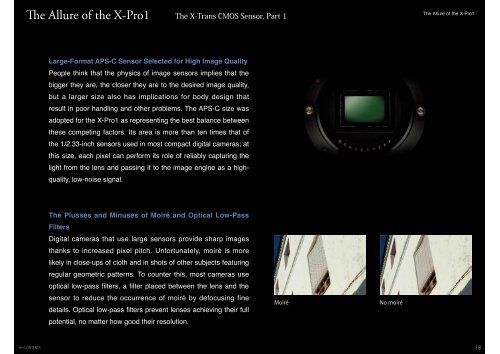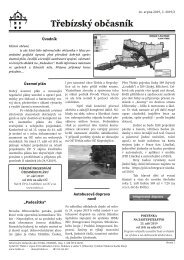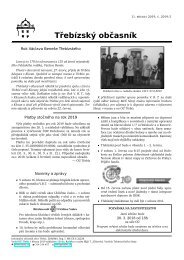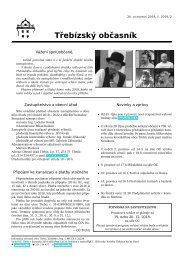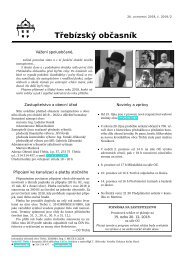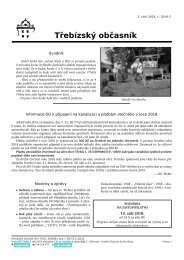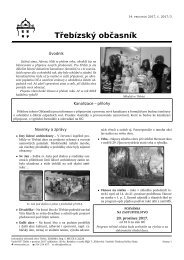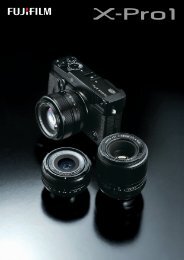FUJIFILM X-Pro1 Photographes's Guidebook
Create successful ePaper yourself
Turn your PDF publications into a flip-book with our unique Google optimized e-Paper software.
The Allure of the X-<strong>Pro1</strong><br />
<br />
<br />
Large-Format APS-C Sensor Selected for High Image Quality<br />
People think that the physics of image sensors implies that the<br />
bigger they are, the closer they are to the desired image quality,<br />
but a larger size also has implications for body design that<br />
result in poor handling and other problems. The APS-C size was<br />
adopted for the X-<strong>Pro1</strong> as representing the best balance between<br />
these competing factors. Its area is more than ten times that of<br />
the 1/2.33-inch sensors used in most compact digital cameras; at<br />
this size, each pixel can perform its role of reliably capturing the<br />
light from the lens and passing it to the image engine as a highquality,<br />
low-noise signal.<br />
The Plusses and Minuses of Moiré and Optical Low-Pass<br />
Filters<br />
Digital cameras that use large sensors provide sharp images<br />
thanks to increased pixel pitch. Unfortunately, moiré is more<br />
likely in close-ups of cloth and in shots of other subjects featuring<br />
regular geometric patterns. To counter this, most cameras use<br />
optical low-pass filters, a filter placed between the lens and the<br />
sensor to reduce the occurrence of moiré by defocusing fine<br />
details. Optical low-pass filters prevent lenses achieving their full<br />
potential, no matter how good their resolution.


